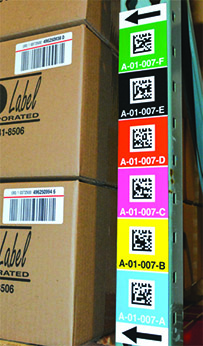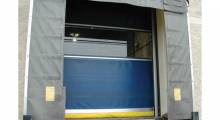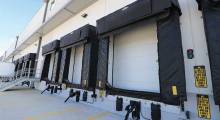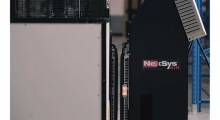Editor’s note: The following column by Kristen Howard, business development manager at ID Label, is part of Modern’s Other Voices column, a series featuring ideas, opinions and insights from end-users, analysts, systems integrators and OEMs. Click here to learn about submitting a column for consideration.
Barcode labels are a vital part of an organized and efficiently run modern warehouse. Each label –whether on a pallet, beam, tote or sign – is loaded with a host of product and location information essential to the management and movement of inventory.
For warehouse rack labels, specifically, there are a couple of options to consider. In this article, I’d like to review applications for vertical location labels.
Primary Advantages of Vertical Labels
There are several benefits derived from using vertical (aka totem) barcode labels in your facilities. These include:
- Eliminates need for long-range scanning and associated errors
- Facilitates man-down, pick-and-scan operations
- Minimizes location confusion and worker errors
- Improves operator scanning accuracy
- When combined with companion location labels, greatly improves accuracy and efficiency
- Enables uniformity across multiple locations for efficient cross-training and consistency
Let’s look at some of these a little more closely.
Up or Down?
In a multilevel rack environment, one option is to place location labels on each individual beam horizontally beneath the pallet bay. In this scenario, warehouse operators use cherry pickers or reach forklift trucks to scan labels at each upper-level rack bay location.
This is often referred to as a “person-up” process, as the worker is literally up at the physical location during the scan process.
If you’re not performing person-up scanning at your locations, vertical location or totem labels are an excellent solution for multilevel warehouse racks. They eliminate the need for long-range scanning, minimize potential confusion and errors and facilitate speedy and efficient operations.
What Information Is Contained in a Vertical Location Label?
A vertical location label is a grouping of barcodes that contains specific information for each level of racking within a pallet bay.
They are often color coded by level. This improves scan accuracy and offers uniformity across a network of distribution centers.
Using the same label format and colors throughout a network of locations simplifies cross-training, as well. And it allows warehouse managers the flexibility to shift workers from location to location as needed.
Vertical location labels are typically accompanied by rack location labels – companion labels, in ID Label terminology. These companion labels are used on all rack levels at the physical location for inventory or cycle counts. The companion label is also color coded per level to correspond to the colors used on the vertical label.
Other Uses and Materials
Vertical labels are also ideal for rack tunnel areas where overhead bays are used but access to beams is limited.
For most applications in ambient temperature settings, we recommend using a durable, rigid label. They apply easily and are made to withstand the knocks and bumps that come with traffic in a typical warehouse or distribution center.
Other popular options include vertical magnet labels or even PVC-printed labels that are secured to racking with zip ties.
Looking Up
Today’s smart warehouses require solutions that foster speed, efficiency and inventory location flexibility. Vertical barcode labels can play an important role in helping you achieve those goals.
Article topics









